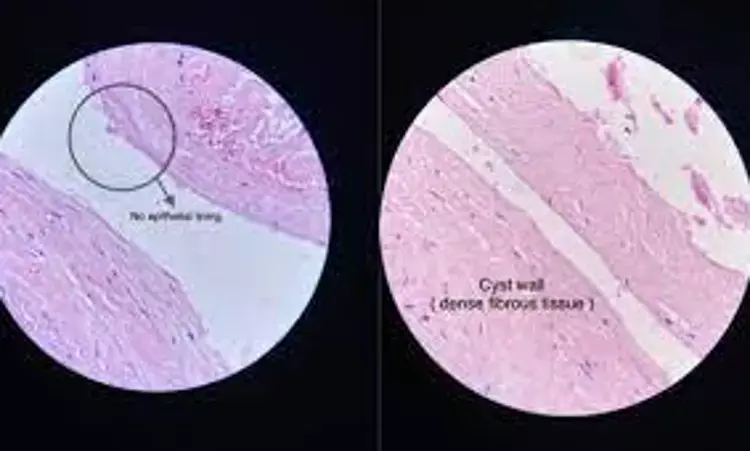- Home
- Medical news & Guidelines
- Anesthesiology
- Cardiology and CTVS
- Critical Care
- Dentistry
- Dermatology
- Diabetes and Endocrinology
- ENT
- Gastroenterology
- Medicine
- Nephrology
- Neurology
- Obstretics-Gynaecology
- Oncology
- Ophthalmology
- Orthopaedics
- Pediatrics-Neonatology
- Psychiatry
- Pulmonology
- Radiology
- Surgery
- Urology
- Laboratory Medicine
- Diet
- Nursing
- Paramedical
- Physiotherapy
- Health news
- Fact Check
- Bone Health Fact Check
- Brain Health Fact Check
- Cancer Related Fact Check
- Child Care Fact Check
- Dental and oral health fact check
- Diabetes and metabolic health fact check
- Diet and Nutrition Fact Check
- Eye and ENT Care Fact Check
- Fitness fact check
- Gut health fact check
- Heart health fact check
- Kidney health fact check
- Medical education fact check
- Men's health fact check
- Respiratory fact check
- Skin and hair care fact check
- Vaccine and Immunization fact check
- Women's health fact check
- AYUSH
- State News
- Andaman and Nicobar Islands
- Andhra Pradesh
- Arunachal Pradesh
- Assam
- Bihar
- Chandigarh
- Chattisgarh
- Dadra and Nagar Haveli
- Daman and Diu
- Delhi
- Goa
- Gujarat
- Haryana
- Himachal Pradesh
- Jammu & Kashmir
- Jharkhand
- Karnataka
- Kerala
- Ladakh
- Lakshadweep
- Madhya Pradesh
- Maharashtra
- Manipur
- Meghalaya
- Mizoram
- Nagaland
- Odisha
- Puducherry
- Punjab
- Rajasthan
- Sikkim
- Tamil Nadu
- Telangana
- Tripura
- Uttar Pradesh
- Uttrakhand
- West Bengal
- Medical Education
- Industry
Rare case of asymptomatic huge primary retroperitoneal pseudocyst reported

A rare case report aimed to present a patient and to check all the available literature on this kind of rare disease, was published in the BMC surgery.
Retroperitoneal non-pancreatic or idiopathic pseudocysts are very rare lesions. The retro-peritoneum is a space situated behind the parietal peritoneum and in front of the transversalis fascia. The retroperitoneum consists of three parts: the anterior pararenal space, the perirenal space, and the posterior pararenal space. The anterior pararenal space contains pancreas, 2nd to 4th parts of the duodenum, and the ascending and descending colon. The perirenal space contains the kidneys, proximal ureters, adrenal glands, and perirenal fat. The posterior pararenal space contains fat tissue and join inferiorly to the pelvic extraperitoneal space.
Most of the retroperitoneal masses originate from the retroperitoneal organs and are not considered as the primary retroperitoneal masses. A primary retroperitoneal mass is diagnosed once the location is inside the retroperitoneal space and after exclusion of the originity from an organ. Primary retroperitoneal masses can be divided into solid and cystic groups and these two groups can be classified as neoplastic and non-neoplastic subgroups. Table 1 shows the differential diagnosis of the primary retroperitoneal masses
A patient who was a 67-year-old Iranian man admitted with mild abdominal discomfort for three months. Ultrasonography and CT scan revealed a huge cystic structure within the retroperitoneal space. The lesion was excised through midline laparotomy and opening of the retro-peritoneum. The histopathology of the cyst wall revealed a benign cystic lesion with no epithelial lining. A histologic diagnosis of non-neoplastic retroperitoneal pseudocyst was made.
Thus, researchers concluded that the primary non-pancreatic retroperitoneal pseudocysts are rare lesions and have to be distinguished from other differential diagnoses of retroperitoneal lesions, and a surgeon should be aware of the possible occurrence of these lesions with unknown origin. Surgical excision is the only way to exclude malignancy and confirm the diagnosis.
Reference:
An asymptomatic huge primary retroperitoneal pseudocyst: a case report and review of the literature by Lotfolah Abedini, et al. published in the BMC Surgery.
https://bmcsurg.biomedcentral.com/articles/10.1186/s12893-022-01510-5
Dr. Shravani Dali has completed her BDS from Pravara institute of medical sciences, loni. Following which she extensively worked in the healthcare sector for 2+ years. She has been actively involved in writing blogs in field of health and wellness. Currently she is pursuing her Masters of public health-health administration from Tata institute of social sciences. She can be contacted at editorial@medicaldialogues.in.
Dr Kamal Kant Kohli-MBBS, DTCD- a chest specialist with more than 30 years of practice and a flair for writing clinical articles, Dr Kamal Kant Kohli joined Medical Dialogues as a Chief Editor of Medical News. Besides writing articles, as an editor, he proofreads and verifies all the medical content published on Medical Dialogues including those coming from journals, studies,medical conferences,guidelines etc. Email: drkohli@medicaldialogues.in. Contact no. 011-43720751


